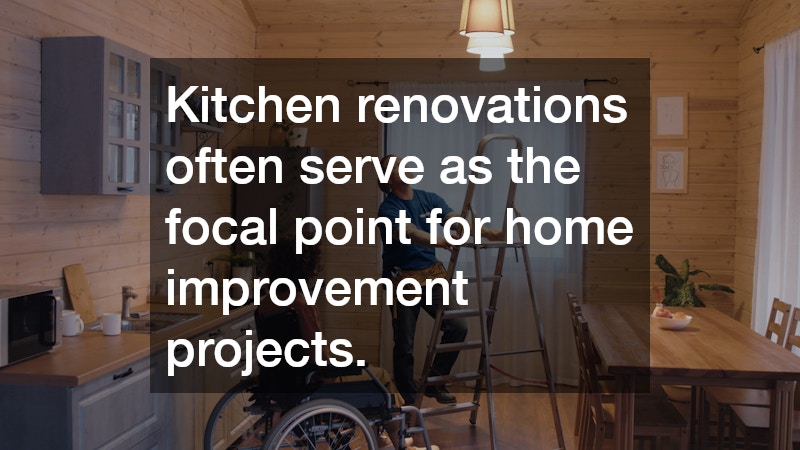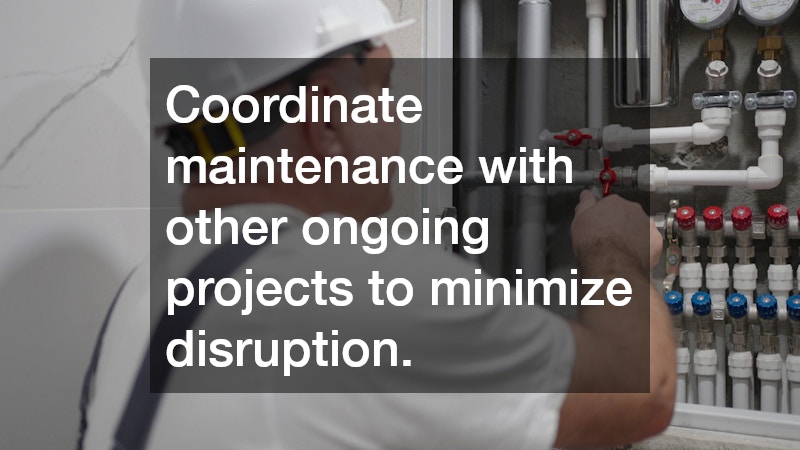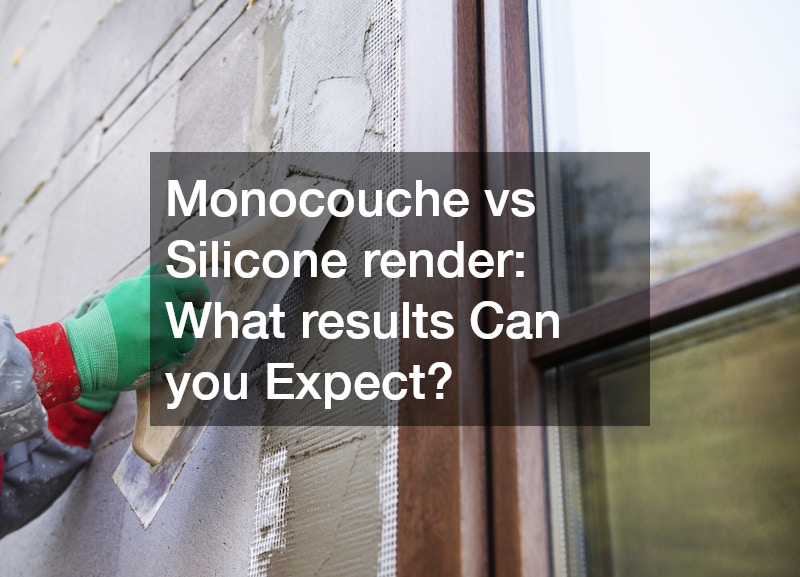Maintaining a comfortable, safe, and visually appealing home requires more than occasional fixes or surface-level improvements. A modern approach to homeownership combines renovation, thoughtful design, and proactive maintenance to create spaces that are functional, efficient, and tailored to your lifestyle. By taking a comprehensive view, homeowners can enhance property value, prevent costly repairs, and enjoy a living environment that is both beautiful and durable. This approach also emphasizes the importance of planning a home renovation, prioritizing projects, and selecting skilled professionals to ensure quality results. Understanding the best practices for renovations, design projects, and upkeep empowers homeowners to make informed decisions, coordinate multiple services effectively, and achieve cohesive results. By integrating long-term maintenance with smart upgrades and aesthetic improvements, families can create a home renovation that not only looks great but also performs optimally for years to come, providing both comfort and peace of mind.
Assessing Your Home’s Current Needs
Before undertaking any significant improvements, it’s essential to evaluate your home’s current condition and identify areas that require attention. This step helps prioritize projects and allocate resources effectively, whether addressing structural concerns, updating outdated interiors, or improving energy efficiency.
Tips for evaluating your home:
-
Conduct a room-by-room inspection to identify maintenance needs and potential upgrades.
-
Check roofs, siding, and foundational elements for signs of wear or damage.
-
Examine plumbing, electrical, and HVAC systems to ensure they meet current standards.
-
Create a budget that balances immediate repairs with long-term renovation goals.
Working with experienced professionals can provide a clearer picture of your home’s condition and ensure that any recommendations are accurate and practical. Roofing contractors and structural specialists can assess potential risks, allowing homeowners to address issues before they escalate. Proactive evaluation reduces long-term costs and helps set realistic expectations for renovation timelines and budgets.

Designing Functional and Stylish Spaces
A thoughtfully designed home blends aesthetics with functionality, ensuring that every room is both practical and visually appealing. From kitchen design to living areas, intentional design choices can dramatically improve your quality of life and enhance property value.
Actionable tips for designing functional spaces:
-
Optimize layouts to maximize usable space and improve traffic flow.
-
Use durable, high-quality materials that withstand daily wear while enhancing appearance.
-
Choose finishes, colors, and textures that complement both modern trends and timeless design.
-
Incorporate multi-functional furniture and storage solutions to reduce clutter.
Kitchen renovations often serve as the focal point for home improvement projects. Selecting the right cabinetry, countertops, and lighting can transform the space into a hub of efficiency and style. Similarly, flooring choices impact both comfort and durability; a flooring company can guide you in selecting materials suited to your lifestyle, whether in high-traffic areas or rooms with high moisture exposure.
Enhancing Outdoor Spaces and Property Value
Outdoor living spaces and landscaping significantly influence a home’s curb appeal and usability. Investing in hardscaping and exterior improvements not only increases enjoyment but also adds long-term value.
Tips for creating functional and attractive outdoor areas:
-
Plan patios, walkways, and driveways for durability, aesthetics, and accessibility.
-
Use quality materials for high-traffic surfaces like concrete driveways to prevent cracks and erosion.
-
Integrate lighting, seating, and plantings to enhance usability and ambiance.
-
Work with a hardscaping company to design cohesive, long-lasting exterior features.
Maintaining your outdoor spaces requires careful planning. From tree trimming to lawn irrigation, regular upkeep ensures that outdoor investments remain attractive and functional. Thoughtful design reduces maintenance needs while creating areas perfect for family gatherings, entertaining, or relaxation.

Maintaining a Safe and Efficient Home Environment
Home safety and efficiency are crucial to preserving comfort and preventing costly repairs. Electrical systems and roofing are two primary areas where proactive maintenance can prevent hazards and protect your investment.
Tips for maintaining safety and efficiency:
-
Schedule regular electrical inspections and preventative maintenance with a licensed electrician.
-
Ensure roofs are inspected and repaired promptly to avoid leaks and structural damage.
-
Upgrade outdated wiring and roofing materials to improve safety and energy efficiency.
-
Coordinate maintenance with other ongoing projects to minimize disruption.
Routine care prevents emergencies and extends the life of critical systems. By staying proactive, homeowners can reduce risks associated with electrical malfunctions, water intrusion, and other preventable issues.
Pest Management and Preventive Measures
Pests can pose significant threats to both the structural integrity and comfort of your home. Implementing preventative strategies ensures a safe, healthy living environment while protecting valuable investments.
Tips for effective pest management:
-
Identify early signs of infestations, including bed bugs, termites, or rodents.
-
Schedule professional bed bug exterminator services when necessary to eliminate persistent issues.
-
Incorporate preventive measures during home renovations, such as sealing gaps and using pest-resistant materials.
-
Maintain cleanliness and proper waste disposal to reduce the risk of future infestations.
Combining pest control with renovation efforts ensures that improvements are long-lasting and unimpeded by recurring issues. Addressing potential pest problems proactively reduces repair costs and preserves the safety and comfort of your home.
Tree Care and Landscape Maintenance
Healthy trees and landscaping not only enhance visual appeal but also protect property and increase overall home value. Proper care reduces hazards, improves air quality, and creates a more inviting environment.
Tips for effective tree care management:
-
Schedule routine inspections and trimming with certified tree services to prevent damage to structures and power lines.
-
Evaluate soil quality, irrigation, and exposure to ensure long-term tree health.
-
Remove dead or hazardous branches promptly to protect your home and family.
-
Plan landscaping projects that complement existing trees and promote sustainable growth.
Regular tree care reduces the likelihood of accidents caused by falling branches and maintains the aesthetic appeal of outdoor spaces. Working with professionals ensures that pruning, fertilization, and disease prevention are performed safely and effectively.
Coordinating Multiple Projects Efficiently
Homeowners often juggle several projects simultaneously, including interior renovations, flooring upgrades, and exterior improvements. Effective project coordination ensures timely completion and minimizes disruptions.
Tips for managing multiple projects:
-
Create a master schedule: Align contractors, suppliers, and service providers so that each task follows a logical sequence. This prevents overlapping work that can cause delays or interfere with other improvements.
-
Set clear priorities: Determine which projects are most urgent or time-sensitive, and communicate these priorities with all involved parties. Ensuring everyone understands the critical path keeps the team focused and efficient.
-
Budget for contingencies: Allocate funds for unexpected challenges, such as material shortages, weather delays, or unforeseen repairs. A flexible budget helps prevent stress and keeps projects on track.
-
Maintain detailed records: Document materials, labor hours, invoices, and project milestones. This not only aids in tracking progress but also helps resolve disputes, ensures accurate billing, and simplifies future maintenance planning.
-
Coordinate between contractors: For projects that involve multiple specialties, such as roofing, flooring, and landscaping, schedule work to minimize interference. For example, exterior improvements may need to precede indoor painting or flooring installations to avoid damage.
-
Communicate consistently: Regular updates with contractors and suppliers prevent misunderstandings and ensure that all parties are aligned on expectations, timelines, and quality standards.
Streamlining multiple projects reduces downtime and prevents conflicts between contractors. By coordinating efforts, homeowners ensure that renovations, flooring installations, and maintenance occur seamlessly, maintaining the overall quality, functionality, and aesthetic appeal of the home.
Maximizing Return on Investment
Smart home improvements increase property value and improve living conditions. Selecting upgrades that offer long-term benefits ensures that each investment is worthwhile.
Tips for maximizing ROI:
-
Prioritize projects with high visibility and lasting impact: Kitchens, bathrooms, flooring, and exterior enhancements are areas that significantly influence both daily enjoyment and future resale value.
-
Choose materials that balance durability with aesthetic appeal: High-quality materials not only look better but also withstand wear and tear, reducing replacement costs over time.
-
Consider energy-efficient and low-maintenance options: Features like LED lighting, energy-efficient appliances, and sustainable flooring or roofing materials lower ongoing utility bills and minimize upkeep, contributing to long-term savings.
-
Evaluate trends and buyer preferences: Understanding what potential buyers value, such as open-concept layouts, modern kitchens, or outdoor living spaces, helps guide investments for maximum appeal.
-
Integrate functionality with style: Ensure that upgrades improve everyday usability while complementing the home’s design. For example, durable yet stylish flooring in high-traffic areas can enhance both convenience and visual appeal.
-
Plan exterior improvements strategically: Landscaping, hardscaping, and driveway upgrades not only boost curb appeal but also protect structures and enhance property longevity. Well-executed outdoor improvements can make a strong first impression and improve overall satisfaction with your home.
Focusing on strategic renovations allows homeowners to enjoy immediate benefits while boosting the home’s market value. Combining interior and exterior improvements with regular maintenance ensures sustained appeal, functionality, and a living space that is both comfortable and investment-worthy for years to come.

Choosing the Right Professionals for Every Task
Hiring skilled and reliable contractors is essential for achieving high-quality results. Proper vetting ensures projects are completed safely, efficiently, and to the homeowner’s satisfaction.
Tips for selecting professionals:
-
Verify licenses, insurance, and industry credentials.
-
Review portfolios, client testimonials, and previous project outcomes.
-
Discuss timelines, budgets, and expectations upfront to avoid misunderstandings.
-
Confirm the contractor’s experience in both installation and long-term maintenance.
Whether working with roofing companies, electricians, or flooring specialists, a trustworthy professional ensures consistent results and protects your investment. Clear communication and documented agreements enhance accountability and reduce project stress.
Long-Term Home Maintenance and Care
Regular maintenance preserves both the beauty and functionality of a home. Seasonal inspections and preventative strategies help avoid costly repairs and ensure the property remains safe and comfortable. A proactive approach not only addresses immediate concerns but also anticipates potential issues before they become major problems. This mindset extends the life of key systems, prevents unexpected expenses, and maintains the overall value of your property.
Tips for long-term maintenance:
-
Conduct seasonal roof inspections and minor repairs to prevent leaks.
-
Schedule routine tree care and landscaping services to protect structures and enhance curb appeal.
-
Perform regular electrical check-ups to maintain efficiency and safety.
-
Inspect plumbing systems for leaks, corrosion, or worn components to prevent water damage.
-
Clean and maintain gutters and downspouts to ensure proper water drainage.
-
Address minor issues promptly to prevent escalation into larger problems.
-
Maintain HVAC systems with regular servicing to improve comfort and reduce energy costs.
-
Check flooring and interior finishes for signs of wear, and perform repairs or refinishing as needed.
Consistent upkeep prolongs the lifespan of materials, improves energy efficiency, and maintains the home’s overall value. Additionally, keeping a detailed maintenance log helps track completed tasks and upcoming needs, allowing homeowners to plan effectively and avoid missing critical inspections. By planning for long-term care, homeowners can enjoy a worry-free living environment, reduce emergency repairs, and maximize the benefits of their renovations and improvements over time.
Expert home renovation, design, and maintenance require thoughtful planning, coordination, and the support of skilled professionals. By addressing both interior and exterior needs, homeowners can create safe, functional, and visually appealing spaces that enhance daily life and protect long-term value. Prioritizing preventative care, investing in high-quality materials, and choosing reliable contractors ensures that every improvement contributes to comfort, efficiency, and aesthetic appeal.
A comprehensive approach to homeownership considers all aspects of property care—from roofing and flooring to tree maintenance, pest control, and electrical safety. Coordinating projects effectively, maintaining a clear record of work, and staying proactive with repairs help prevent costly surprises while optimizing the overall living experience.
Whether updating a kitchen, maintaining a driveway, installing new flooring, or addressing urgent maintenance needs, a structured and modern strategy empowers homeowners to enjoy their space fully. By integrating design, renovation, and maintenance into a cohesive plan, families can maximize property value, ensure long-term safety, and cultivate an inviting environment for everyday living. With diligence, planning, and expert guidance, every home can achieve its full potential, providing comfort, efficiency, and peace of mind for years to come.
A comprehensive approach begins with careful planning and prioritization of projects. Assessing the current state of your home and identifying areas that need immediate attention versus long-term improvements allows you to allocate resources effectively. This prevents unnecessary expenses and ensures that each investment contributes meaningfully to the home’s overall functionality and aesthetic appeal. For example, combining routine maintenance with larger renovations, such as updating roofing or landscaping, can reduce disruptions and extend the lifespan of your upgrades.
Equally important is partnering with skilled professionals who understand both design and construction principles. Experienced contractors, designers, and maintenance specialists bring knowledge and precision to each task, ensuring that improvements are executed safely, efficiently, and to a high standard. They can provide guidance on material selection, energy efficiency, and techniques that optimize both durability and appearance.
Finally, ongoing care and proactive upkeep are key to sustaining the results of your home improvements. Routine inspections, timely repairs, and preventive measures safeguard your investment while reducing stress and emergency costs. By approaching home improvement holistically, homeowners not only enhance their living spaces but also create an environment that is functional, beautiful, and enduring—a true reflection of thoughtful planning and commitment to long-term quality.




